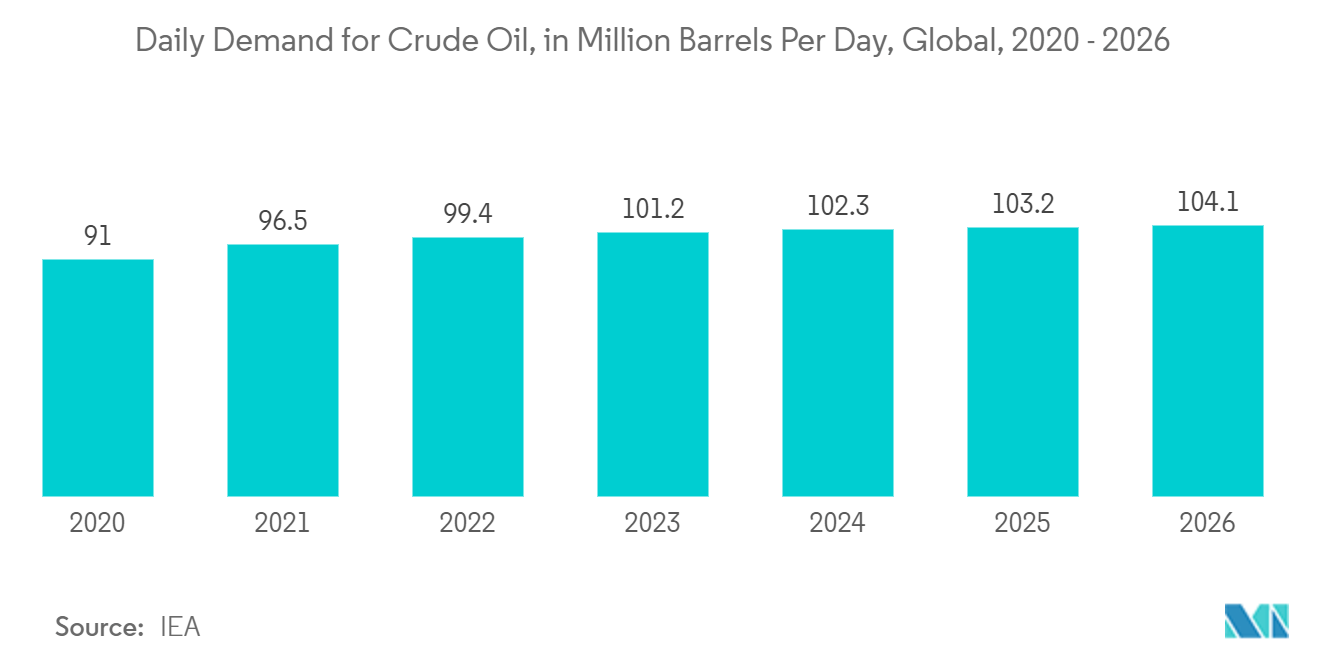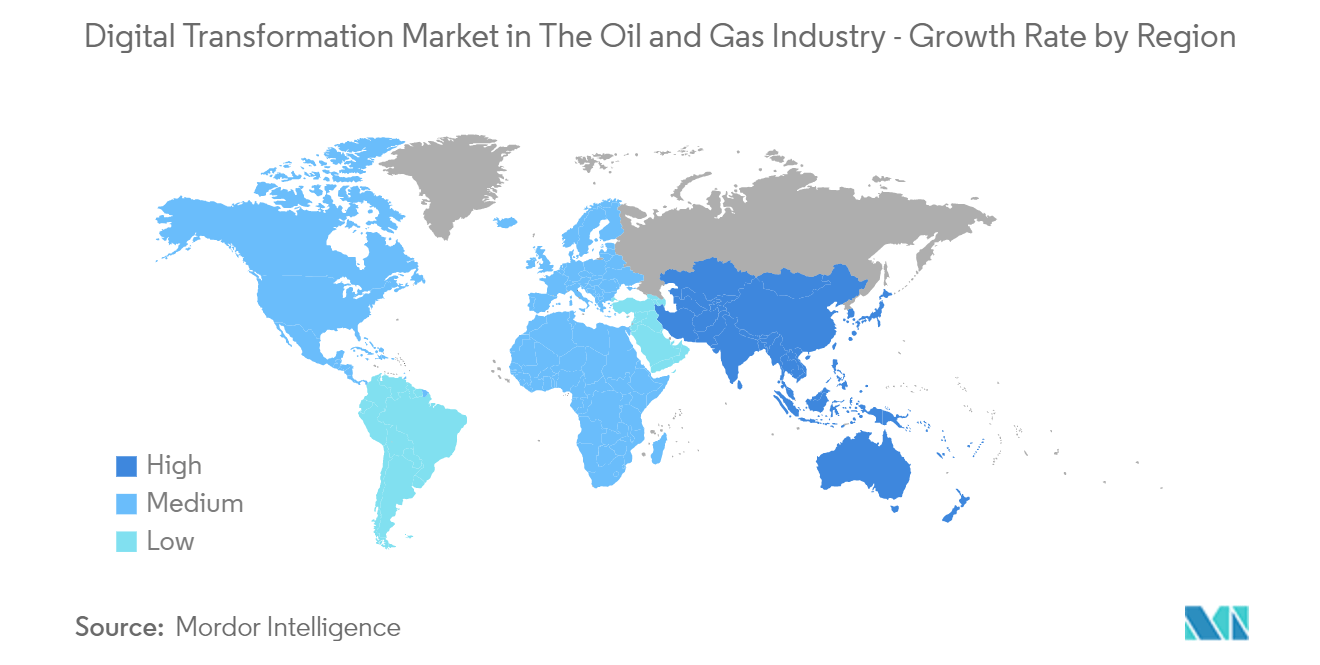Market Trends of Digital Transformation Industry in The Oil and Gas Industry
This section covers the major market trends shaping the Oil & Gas Industry Digital Transformation Market according to our research experts:
Downstream Sector is Expected to Witness Major Market Share
- Digital transformation is considered one of the core innovations in leading the downstream operations of the oil and gas industry. The companies are focusing on increasing asset utilization by enhancing the manufacturing efficiency of the plants.
- The downstream operations of the oil and gas companies, including both petrochemicals and refining, have always adopted technology to improve their operations. These companies have developed and adopted innovative approaches that manage complex processes and interpret data to improve performance. The ongoing shift to becoming digital is expected to present even greater potential, given the strategic push by many companies to expand their downstream operations of the oil and gas value chain, especially petrochemicals.
- The primary area of concern for the vendors is how to predict and prevent or reduce maintenance costs. The automation solutions for maintenance and turnaround planning tools use application performance management and AI-based simulation and can be easily added to an existing operational system. Moreover, the upgradation of sensor systems to enable better predictive and prescriptive maintenance can lead to long-term operational efficiencies.
- Multiple oil and gas companies are relying on technologies such as AI, IoT, and Big Data, among others, to improve their operations. For instance, Shell's downstream commercial business, responsible for supplying oil and gas to the end consumer, uses AI technology to predict consumer demand for petroleum products, measure supply shortages, and recommend a mix of oil for a refining process.
- Furthermore, the growing expansions in the sector are also set to boost the market growth rate during the forecast period. For instance, in May 2022, as it extended its downstream presence in Asia, the Saudi Arabian Oil Company ("Aramco") announced a collaboration with Thailand's government oil company PTT. The organizations aim to improve their partnership in procuring crude oil, marketing refining, petrochemical products, and liquefied natural gas (LNG). Blue and green hydrogen, and numerous clean energy programs, are other possible areas of engagement.
- In addition, global demand for crude oil in 2020 decreased to 91 million barrels per day. The decrease in 2020 was due to the economic and mobility impacts of the coronavirus pandemic, including widespread shutdowns worldwide. According to the Energy Information Administration (EIA), Crude oil production is forecasted at 101.2 million barrels per day in 2023. The growing crude oil production is also expected to drive market growth further.

Asia-Pacific to account for a significant share
- The region holds a significant market share in the oil and gas industry. In addition, according to IBEF, India is expected to be one of the most important contributors to non-OECD petroleum consumption growth globally. India's consumption of petrol products stood at 204.23 MMT in FY22. High-Speed Diesel was India's most consumed oil product and accounted for 38.84% of petroleum product consumption in FY22.
- Furthermore, in January 2022, Indian Oil Corp. Ltd (IOCL) announced plans to expand its city gas distribution (CGD) business, looking to invest INR 7,000 crores (USD 918.6 million).
- Countries such as China, India, Japan, and South Korea have one of the most active oil and downstream gas sector in the region, which together is responsible for over 78% of the oil refining capacity, with significant refineries deeply integrated with petrochemical production units, in the Asian-Pacific region. Furthermore, according to IBEF, India aims to commercialize 50% of its SPR (strategic petroleum reserves) to raise funds and build additional storage tanks to offset high oil prices.
- Additionally, countries like Singapore are gaining over 10% refinery throughput in a year. This provides the scope for expansion in current refineries, and possibly new projects are expected to drive the demand for digital transformation.
- Given the long lead times and the massive capital outlay involved in oil and gas production, significant players in the industry are looking to gain a competitive edge through transformational technology such as AI. For instance, Woodside, the most significant Australian natural gas producer, deployed IBM Watson to run AI algorithms operations and search over 25 million documents, retrieve content, benchmark against historical performance, and suggest related information to anyone in the business.
- Furthermore, PetroChina, Asia's leading, announced that its Daqing oilfield, which is aimed to achieve 50 million tons of stable production in 20 years, will leverage digital transformation by enabling technologies such as cloud computing, big data, and IoT, among others.
- However, the oil and gas sector significantly recovered in 2021, boosting the industry to the pre-COVID-19 level. In India, the oil demand is expected to rise 50% by 2030 as against a global expansion of 7%, the International Energy Agency (IEA) has forecast in its latest report in October 2021. Thus, the growth in the sector is expected to drive the market studied.


